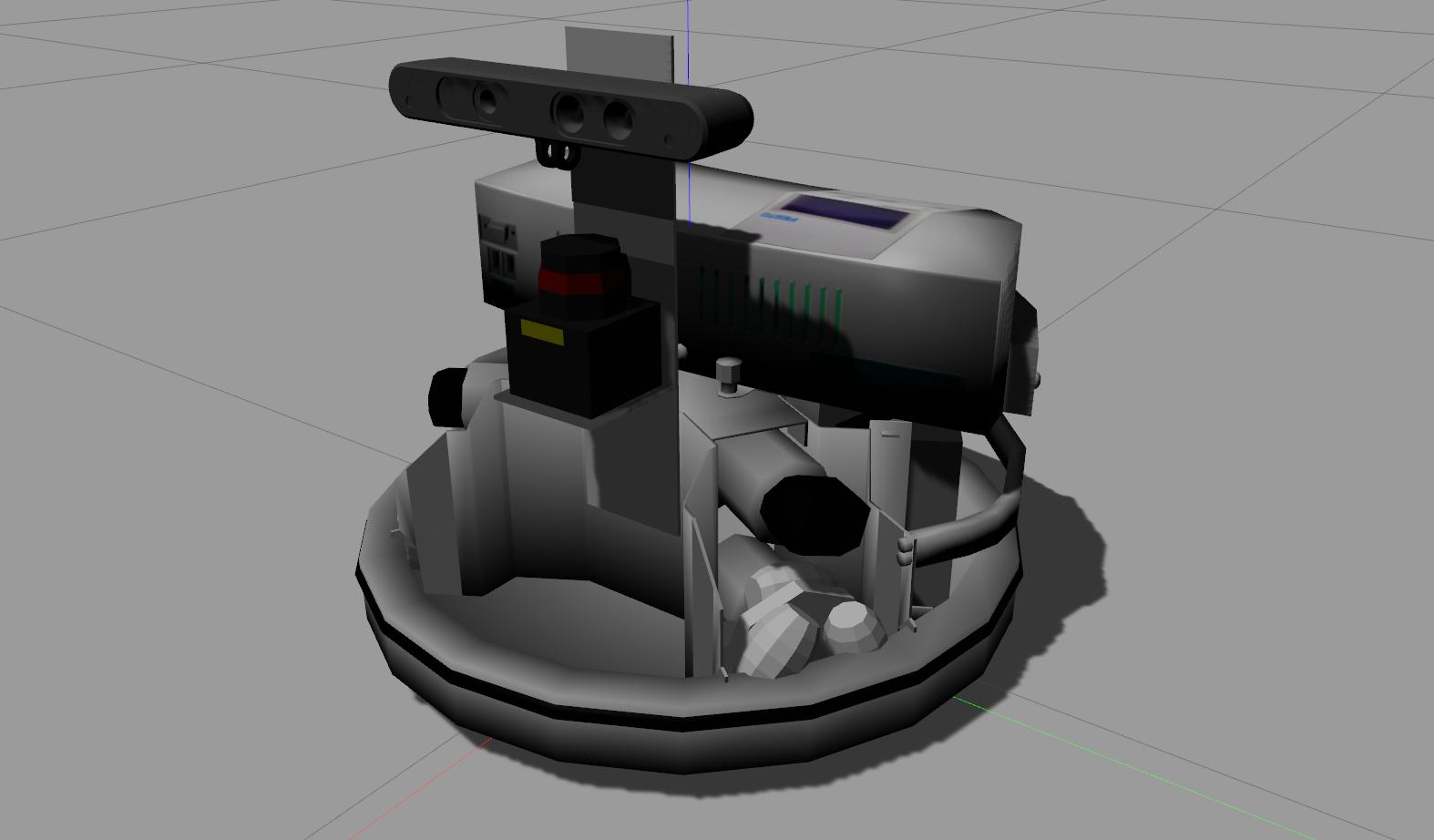This repository contains the ROS source code for simulating the Festo Robotino robot (RTO).
| master | Melodic + Ubuntu Bionic | Noetic + Ubuntu Focal |
|---|---|---|
In the following, all packages within this repository are briefly explained.
- rto_bringup_sim
- Contains config, script and launch files for starting the robot in a simulated world.
- rto_simulation
- The meta-package of this repository.
- rto_worlds
- Contains all world models etc. for bringing up a simulation environment (e.g. gazebo).
In order to use these packages and with that use the robot in a simulated environment you need to have the core packages installed (see below).
- rto_core
- This repository contains everything needed to start-up the RTO in a simulated environment or the real-world, including localization and navigation.
In order to use this package with the rto_core package, you need to first follow the installation instructions from the core repository. Afterwards you just have to clone this repository into your catkin workspace, install all dependencies and build it.
cd ~/catkin_ws/src
git clone https://github.com/dietriro/rto_simulation.git
cd ~/catkin_ws
rosdep install -y --from-paths src --ignore-src --rosdistro noetic --os=ubuntu:focal
catkin buildAfterwards you can use the robot in a simulated environment as described in the next section.
Similarly to the real-world launch structure, you have to execute the following command in a terminal in order to start a simulation environment (in this case gazebo) with a robot:
roslaunch rto_bringup_sim robot.launch
In order to run this successfully, you first need to specify the robot you'd like to use (e.g. rto-1) as well as the world you would like the robot to use (e.g. sim_simple) as environment variables, if you haven't added them to your .bashrc yet.
export ROBOT=rto-1
export ROBOT_ENV=sample
The robot.launch file then starts up all necessary nodes for simulating the environment together with the specified robot in gazebo.
This launch file, however, does not start-up any localization or navigation algorithm. If you would like to map the environment from scratch without a previous map using SLAM you can run the following command after starting up the robot as described in the previous part:
roslaunch rto_navigation slam.launch
You will need the same environment variables (ROBOT, ROBOT_ENV) for this launch file as you did for the previous one. This file then launches a slam algorithm from the slam-toolbox. You can of course also use any other slam framework but the one from Steve Macenski is quite comprehensive and covers even long-term features as well as a continuation feature where you start from a previously built map.
If you already have a map and want the robot to localize and navigate in it then you need to run the following:
roslaunch rto_navigation navigation.launch
Again, the same environment variables as before (ROBOT, ROBOT_ENV) are needed.
Regardless of the localization/navigation launched, you can always run an rviz instance with pre-designed configuration file
roslaunch rto_bringup rviz.launch
This configuration includes visualizations for the most important topics.
